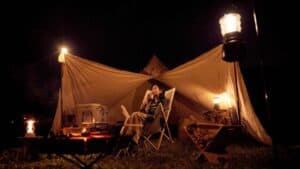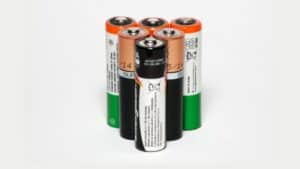LED Warning Lights are more than just bright flashes; they’re a vital part of keeping people safe. In this guide, we’ll cover everything from what they are and why they’re so great, to the different types and colors you’ll see on the road. By the end of this guide, you’ll be an expert.
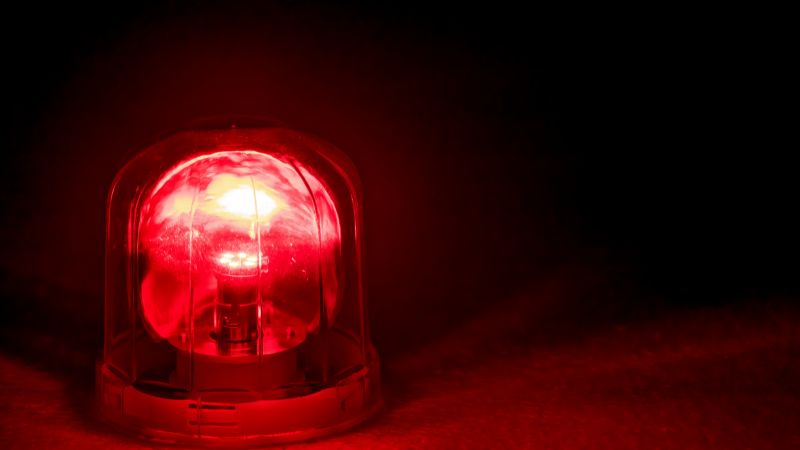
Why LED is the Best Choice for Emergency Warning Lights
You might be wondering, “What’s the big deal with LEDs?” Well, when it comes to warning lights, LED technology is a game-changer. Here’s why it’s the top choice for safety.
- They’re Super Bright: LED lights are incredibly bright and can be seen from far away, even in broad daylight or bad weather. This extra visibility gives other drivers more time to react, which helps prevent accidents.
- Built to Last: These lights are tough. Unlike old-school bulbs with fragile filaments, LEDs are solid and can handle bumps, vibrations, and rough conditions. They also last for thousands of hours, so you won’t have to replace them often.
- Energy Savers: LEDs use a lot less power than traditional lights. This is great news for your vehicle’s battery, especially if you need to keep the lights running for a long time.
- The New Standard: LED is the future. It’s easier than ever to find LED lights and accessories, so you’ll have no trouble upgrading or finding a replacement.
5 Different Types of LED Warning Lights
LED warning lights come in all shapes and sizes, designed for different jobs and vehicles. Here are some of the most common types you’ll find.
1. LED Light Bars
Think of these as the command center of warning lights. They are long, powerful bars mounted on the roof to provide maximum visibility from every angle.
- Who Uses Them? Police cruisers, fire engines, tow trucks, and large construction vehicles.
- Why They’re Great: They offer complete 360-degree coverage, eliminating any blind spots. Nothing says “pay attention” quite like a full-size light bar. They also come in smaller “mini-light bars” that offer great visibility for smaller trucks or personal vehicles.
2. Beacon Lights
A beacon is a single, stand-alone light that packs a big punch. It’s designed to be a concentrated, impossible-to-miss signal, usually mounted on the roof.
- Who Uses Them? Utility trucks, snowplows, warehouse forklifts, and landscaping vehicles.
- Why They’re Great: They are simple, highly effective, and incredibly versatile. Many beacons have a magnetic base and a cigarette-lighter plug, meaning you can mount and power them in seconds without any permanent installation.
3. Grille and Surface Mount Lights
These are small, discreet lights that let you customize your setup. Because they’re so compact, you can tuck them into all sorts of places to supplement your main lights or create a low-profile look.
- Who Uses Them? Virtually everyone, from emergency vehicles to utility trucks, often to fill in visibility gaps.
- Why They’re Great: Their versatility is unmatched. You can mount them in the grille, on the bumper, on side mirrors, or even near the license plate. When installed well, they can look like they came straight from the factory.
4. Dash and Visor Lights
These lights are made for the interior of your vehicle, usually mounted against the windshield or clipped to the sun visor. They are the definition of a temporary, “plug-and-play” solution.
- Who Uses Them? Volunteer first responders, private investigators, and security personnel who use their personal vehicles for work.
- Why They’re Great: They require zero permanent installation. You can put them in when you’re on duty and take them out when you’re not, leaving your vehicle looking completely normal.
5. Traffic Advisors / Arrow Sticks
You’ve seen these arrow-like lights on the back of highway patrol cars or construction trucks. Their job is to communicate a clear, simple message to other drivers: “move over.”
- Who Uses Them? Department of Transportation (DOT) vehicles, tow trucks, and police directing traffic around an accident.
- Why They’re Great: They are essential for roadside safety. By clearly directing the flow of traffic with patterns that point left, right, or split down the middle, they protect both roadside workers and the driving public.
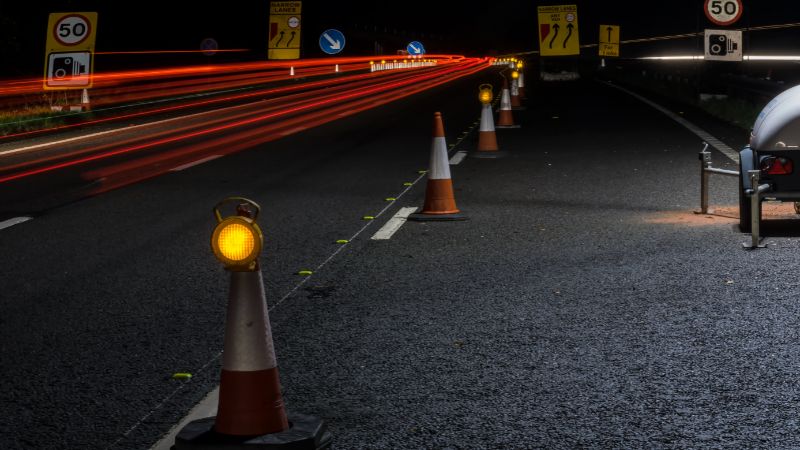
The Language of Light: What the Colors Mean
Did you know that the color of a warning light has a specific meaning? Using the right color is not just important for communication—it’s the law!
- Red: This color is almost always for emergency vehicles like fire trucks, ambulances, and police cars. When you see red lights, it means move out of the way.
- Amber/Yellow: This is the most common color for non-emergency vehicles that might be a hazard. Think tow trucks, snowplows, construction vehicles, and utility trucks.
- Blue: Blue lights are typically reserved for law enforcement. In some places, volunteer firefighters might also use them.
- White: White lights are often used with other colors to make a vehicle even more visible. They add an extra “pop” that grabs your attention.
- Green: Green lights are less common, but they’re sometimes used by volunteer emergency responders or security vehicles to show they are on duty.
Factors to Consider Before Buying LED Warning Lights
Ready to get some lights? Picking the right ones can feel overwhelming, but it doesn’t have to be. Here’s what to consider.
- Your Vehicle and Mounting: First, think about your vehicle. Do you need a permanent light for a work truck or a magnetic one you can easily remove from your personal car?
- Brightness: How bright do you need to be? For a large construction vehicle, you’ll want something more powerful than what you’d need for a small security car.
- Flash Patterns: Many lights come with different flash patterns. Some are slow and steady, while others are fast and frantic. Different patterns are better for different situations.
- Weather Resistance: If your lights are going on the outside of your vehicle, make sure they are weather-resistant. Look for an “IP rating” (like IP67) which tells you how well they are sealed against dust and water.
- Installation: Think about how the lights will be wired. Some are simple plug-and-play, while others might require professional installation.
Who Uses LED Warning Lights?
These lights are essential for a wide range of professionals who work on and near our roads.
- Emergency Services: Police, fire, and EMTs rely on them to get to emergencies safely and quickly.
- Towing and Roadside Assistance: Tow trucks use amber lights to warn other drivers when they are stopped on the side of the road.
- Construction and Utility Workers: These lights protect workers by making their vehicles and work zones highly visible.
- Security Patrols: Security vehicles use them to show they are on patrol and to respond to incidents.
- Volunteer First Responders: Many volunteers use personal vehicles to respond to emergencies, and warning lights are crucial for their safety.
Always Stay Legal!
This is super important: always check your local and state laws before using any colored warning lights. Using the wrong color can get you into serious trouble, including big fines. The rules can vary a lot from one place to another, so a quick search for your state’s vehicle code is a must.
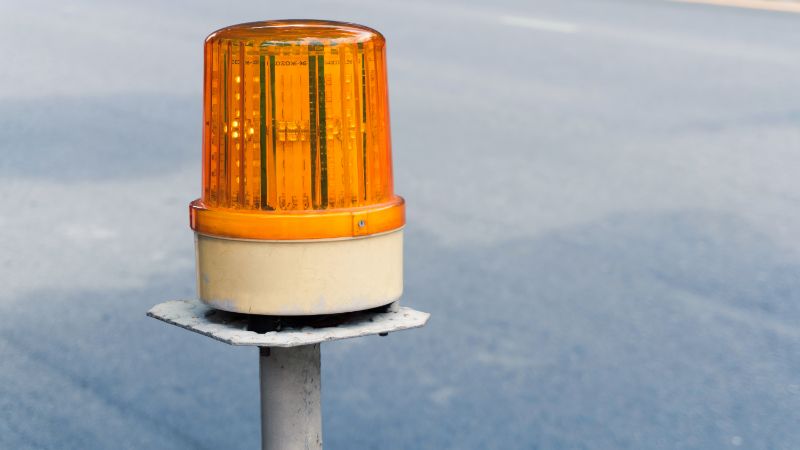
Find the Right LED Warning Lights with M&F Optoelectronics
If you are sourcing top-tier LED warning lights, M&F Optoelectronics stands out as a leading manufacturer with over 15 years of industry experience. MF provides a diverse selection of high-quality portable lighting solutions, including a notable range of LED road flares designed for superior visibility and reliability.
For those in need of dependable roadside safety equipment, M&F Optoelectronics offers an extensive lineup of LED road flares. Key offerings include:
- Rechargeable Strobe Warning Lights: These feature powerful amber LEDs and magnetic mounts for easy and secure placement on any vehicle.
- LED Flare Kits: Available in various pack sizes, these kits often include versatile flashlight batons with both red and white LEDs for traffic control and illumination.
- Sequential Warning Lights: These advanced flares offer multiple eye-catching light sequences to effectively direct traffic and enhance safety.
- 360° LED Warning Flares: Designed for maximum impact, these flares provide complete circular visibility and come with features like multicolor flash patterns and magnetic bases.
In addition to dedicated warning lights, M&F Optoelectronics also produces a variety of portable work lights that can serve dual purposes in hazard signaling. Many of these work lights come with emergency features such as red flashing modes, making them invaluable for roadside repairs or unexpected stops.
With a focus on quality, innovation, and customer satisfaction, M&F Optoelectronics is a trusted partner for businesses seeking reliable and effective LED warning and safety lights.
Quick FAQs on LED Warning Lights
- Can I put warning lights on my personal car?
It depends on your local laws. Red and blue lights are almost always illegal unless you’re an emergency responder. Amber lights have fewer rules, but you should still check your local laws first to be safe.
- What is an IP rating?
It’s a score that tells you how weatherproof a light is. The first number is for dust protection, and the second is for water protection. Look for a high rating like IP67, which means the light is sealed tight against dust and rain.
- Are LED warning lights hard to install?
Some are super easy! Magnetic lights often just plug into your car’s power outlet. Lights that need to be wired directly into your car are harder to install. For those, it’s best to hire a professional.
- What’s the difference between a strobe and a flash?
Think of a “strobe” as a super-fast, intense flash of light, like from a camera. A “flashing” light just turns on and off. Modern LED lights can do both, but the goal is the same: to grab your attention.
- How long do LEDs last?
A very long time! Most LED warning lights are rated to last for 30,000 to 50,000 hours. They will likely outlast the vehicle they’re mounted on.
- Do I need different lights for day and night?
No. Good quality LED lights are bright enough to be seen easily in both bright sunlight and at night. Some even have a “dim mode” to reduce glare after dark.


